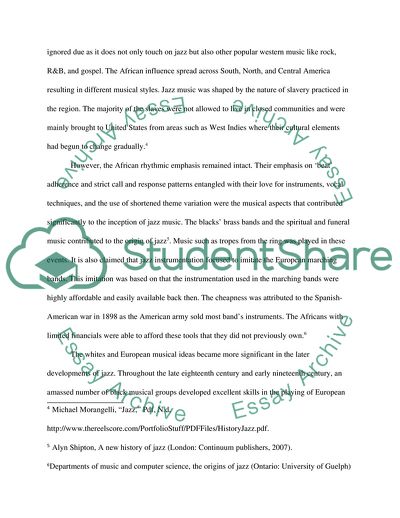Cite this document
(Jazz History Essay Example | Topics and Well Written Essays - 2500 words, n.d.)
Jazz History Essay Example | Topics and Well Written Essays - 2500 words. https://studentshare.org/history/1874369-jazz
Jazz History Essay Example | Topics and Well Written Essays - 2500 words. https://studentshare.org/history/1874369-jazz
(Jazz History Essay Example | Topics and Well Written Essays - 2500 Words)
Jazz History Essay Example | Topics and Well Written Essays - 2500 Words. https://studentshare.org/history/1874369-jazz.
Jazz History Essay Example | Topics and Well Written Essays - 2500 Words. https://studentshare.org/history/1874369-jazz.
“Jazz History Essay Example | Topics and Well Written Essays - 2500 Words”. https://studentshare.org/history/1874369-jazz.


